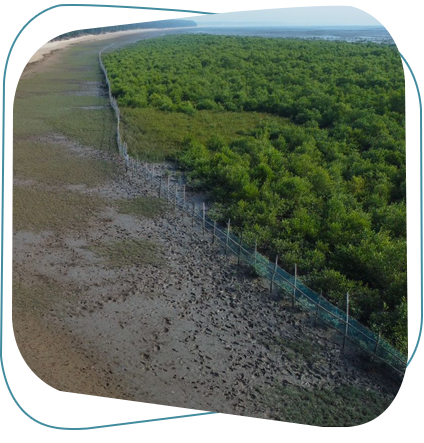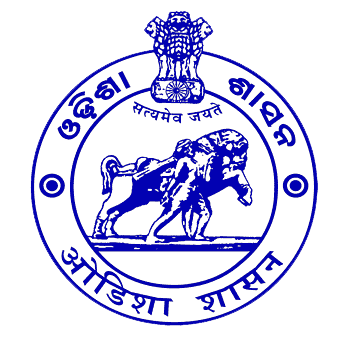ECRICC Project Overview
The Enhancing Climate Resilience of India's Coastal Communities (ECRICC) project focuses on mitigating climate vulnerabilities across India's coastal regions, with special emphasis on Odisha's 7 landscapes spread over 4 districts. The project aims to restore ecosystems, strengthen adaptive capacities, and empower communities for sustainable development. By integrating innovative ecological solutions and community-based approaches, ECRICC addresses the increasing risks posed by climate change to Odisha's 480+km coastline, benefiting ecosystems and over 949 villages.
Key Activities of ECRICC
Ecosystem Restoration
- Mangrove Restoration & Plantation: Establishing nurseries and meta-nurseries, utilizing tidal flow irrigation, and creating fishbone channels for improved water flow and ecosystem health. Deepening creeks to enhance natural water flow and improve salinity control, ensuring the health of coastal ecosystems. Vana Surakhya Samiti members (VSS) are deeply involved in implementation of activities related to earthwork , nursery raising, creek deepening, development of fishbone channels.
- Seagrass and Saltmarsh Protection and Maintenance: The ECRICC project in Odisha launched a state-level initiative to safeguard and restore critical coastal ecosystems, focusing on seagrass and saltmarsh habitats. In partnership with IIT Bhubaneswar, a Memorandum of Understanding (MoU) executed in January 2025, marking the beginning of comprehensive restoration efforts. Leveraging IIT Bhubaneswar's technical expertise, a detailed strategy has been developed to enhance coastal resilience and support biodiversity conservation.
- Watershed Management: The restoration of coastal watershed under the ECRICC project has been incorporating a range of climate-resilient interventions to enhance water conservation, mitigate soil erosion, and support local livelihoods. The project involved the establishment of loose boulder structures to reduce runoff and enhance groundwater recharge, along with the construction of dykes and earthen guided bunds to control water flow and improve soil stability. These efforts collectively aim to strengthen the region's resilience to climate change, support biodiversity, and improve the sustainability of agricultural and community water resources.

Community Engagement & Capacity Building
- Grooming 304 Village Facilitators (Climate Champions) to lead resilience initiatives.
- Mobilizing Self-Help Groups (SHGs), Eco-Development Committees, and village organizations to ensure active participation in climate adaptation efforts.
- Conducting workshops and training programs on sustainable livelihoods and climate-resilient practices.
Institutional Strengthening
- Establishing multi-tiered committees at state, district, Block and village levels for seamless coordination.
- Engaging with technical institutions like IIT Bhubaneswar, NRRI, CIFA and MPEDA for expert guidance and implementation support.
- Building capacity among line departments and district-level agencies to sustain project outcomes.
Innovation and Technology Integration
- Leveraging natural tidal flow for mangrove sapling irrigation.
- Using advanced habitat mapping techniques for effective planning and restoration of ecosystems.
- Developing community-driven solutions to ensure sustainability and scalability.
Livelihood Enhancement
- Promoting eco-friendly and sustainable livelihood options for coastal communities to reduce dependency on degrading natural resources.
- Supporting the development of fisheries, agriculture, and tourism as climate-resilient livelihood alternatives.
ECRICC combines ecological restoration, community empowerment, and scientific innovations to build resilience against climate impacts while promoting sustainable development in India’s vulnerable coastal areas.

